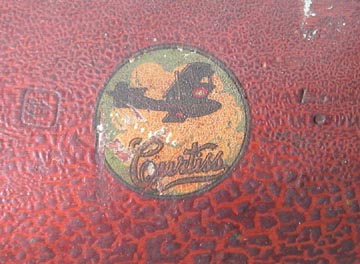Rare opportunity to own a piece of history.. This is formally an original United States Navy propeller as removed from a Curtiss flying boat. The engine that powered this aircraft was a 12 cylinder water cooled Liberty. This aircraft was in service in the early 1920's. I will arrange shipping and packaging at buyer's expense.
See this forum entry for similar, Bob mentions Prop believed to be made by the Lang Prop Company, and English manufacturer that built props for the USN.
http://woodenpropeller.com/forumvB/s...ead.php?t=1903
Being sold on Ebay
http://cgi.ebay.com/ws/eBayISAPI.dll...m=261131310879
See this forum entry for similar, Bob mentions Prop believed to be made by the Lang Prop Company, and English manufacturer that built props for the USN.
http://woodenpropeller.com/forumvB/s...ead.php?t=1903
Being sold on Ebay
http://cgi.ebay.com/ws/eBayISAPI.dll...m=261131310879

Comment